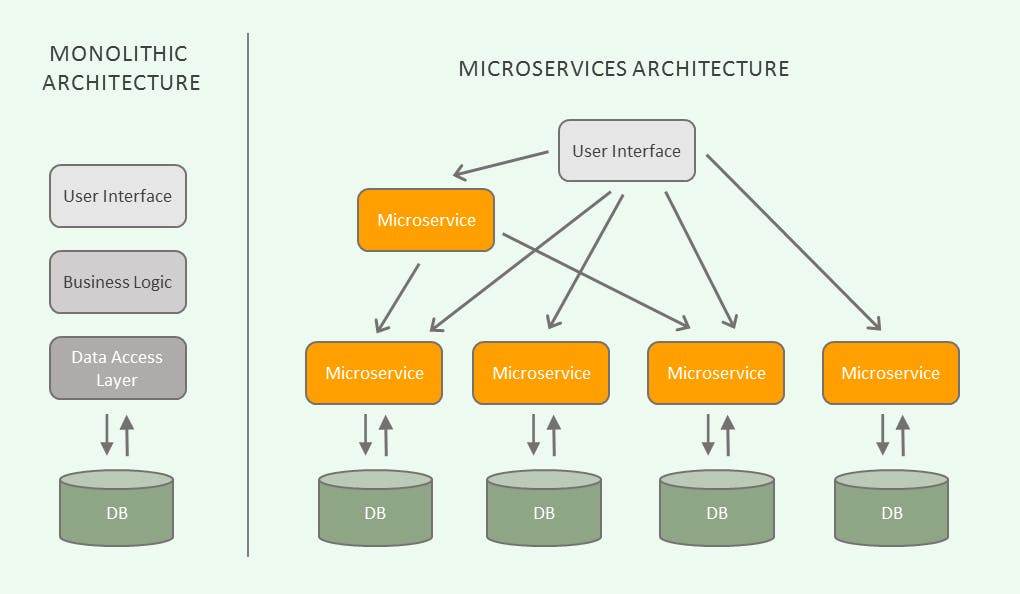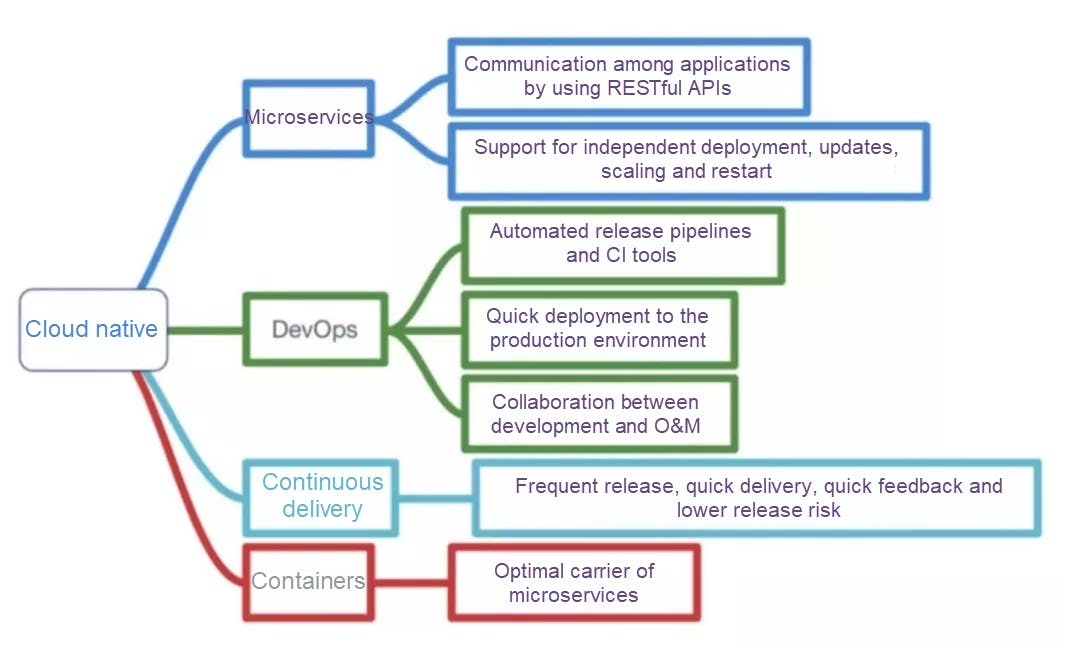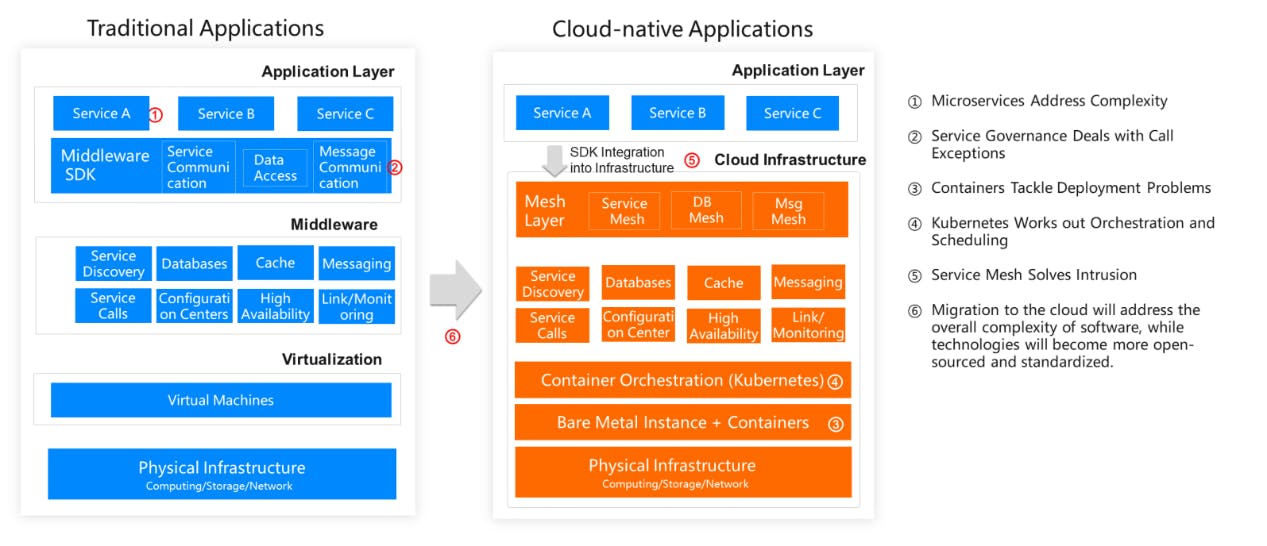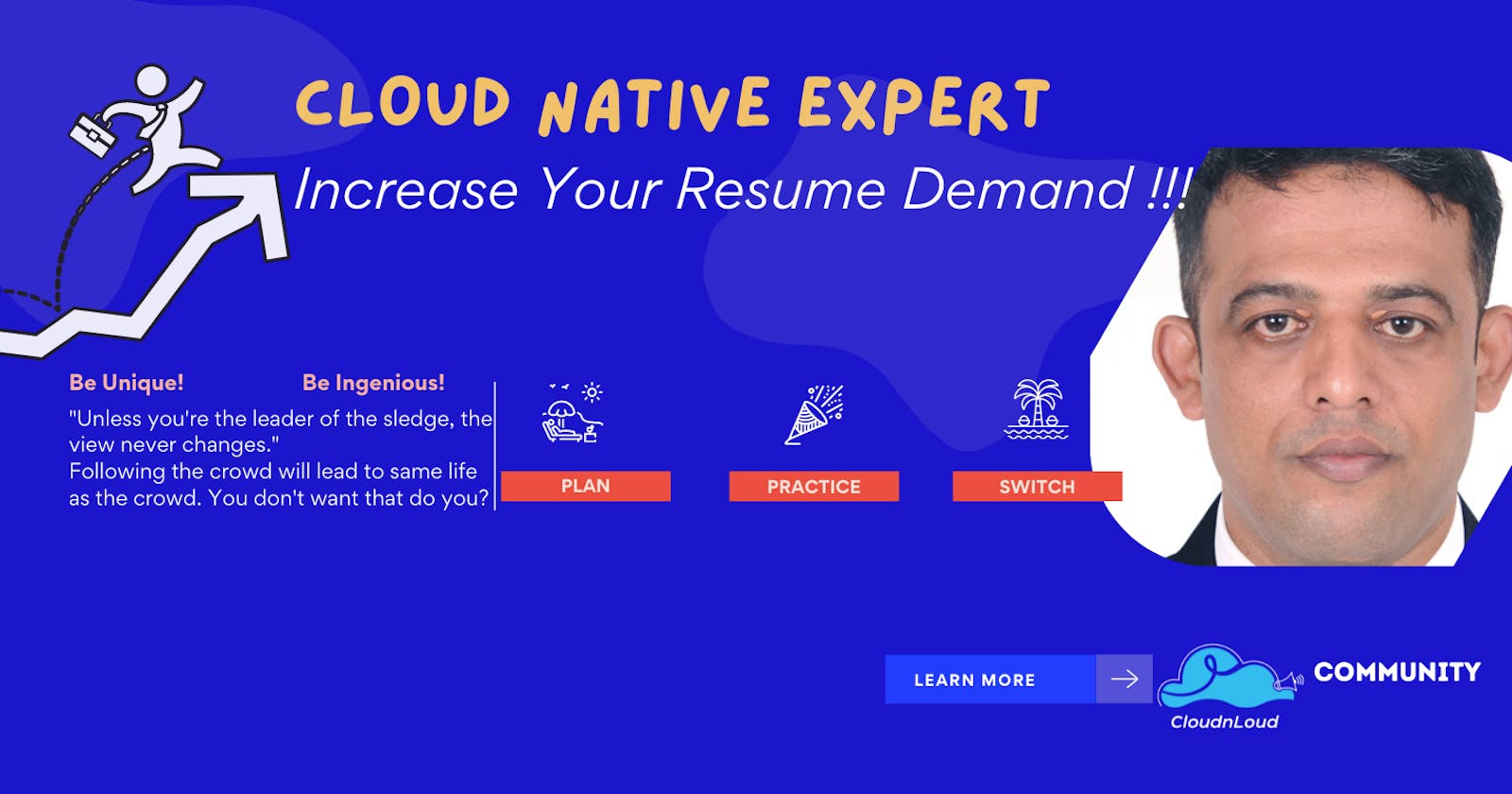- What is Legacy Application?
- What is the meaning of Cloud-Native?
- What is the difference between Cloud and Cloud-Native?
- Why is Cloud-Native important?
- What are the key components of building a Cloud-Native application?
- How to Design Cloud-Native Architecture?
- What do you need? Before moving to PROD?
- What skills do I need to learn Cloud Native?
What is Legacy Application?
Traditional application design is often called “monolithic” because the whole thing is developed in one piece. Even if the logic of the application is modular it’s deployed as one group, like a Java application as a JAR file

In the above sample application workflow in the microservice approach, you can enhance any subcomponent in any manner which is not possible in monolithic or legacy applications.
What is the meaning of Cloud-Native?
The term cloud-native refers to the concept of building and running applications to take advantage of the distributed computing offered by the cloud delivery model. Cloud-native apps are designed and built to exploit the scale, elasticity, resiliency, and flexibility the cloud provides.
What is the difference between cloud and cloud-native?
Cloud-based: Applications are tightly integrated, and upgrades may be needed for the entire stack, causing downtime. Cloud-native: Faster to deploy because there is no hardware or software to deploy. Cloud-based: Slower because of hardware provisioning or software setup.
Why is Cloud Native Important?
Cloud-native helps to make infrastructure management effortless. Using serverless platforms like AWS Lambda and Azure function, they don't need to manage or worry about operating like configuring networking, allocating storage, provisioning cloud instances, etc.
What are the key components of building a cloud-native application?
The word "native" represents applications that are designed to run on the cloud and fully utilize the elasticity and the "distributed" advantage at the very beginning of application design.

How to Design Cloud-Native Architecture?

- Use the microservice architecture to solve the problem of complexity in a monolithic architecture.
- Use a governance framework and monitoring solutions to solve communication problems between microservices.
- User container services to solve the problem of deploying many applications in the microservice framework.
- Use Kubernetes to solve the problem of orchestration and scheduling for container services.
- Use service mesh to solve the problem of intrusion for the microservice framework.
- Run service mesh on Kubernetes to provide better underlying support.
What do you need? Before moving to PROD?

Note: If you are claiming that your application is a cloud-native app then your app must meet the above factors.
What skills do I need to learn Cloud Native? No alt text provided for this image
For the latest more Incubating tools [CNCF]: Link
Conclusion:
In the cloud era, we require novel thinking and concepts to properly understand application architectures and IT infrastructure to correctly answer the question "what does it mean to be cloud-native." The future is undoubtedly cloud-native. Therefore, in addition to tools, enterprises seeking to transform themselves need a complete philosophy that progresses from concepts to methodologies and then to tools. Only in this way can we better embrace the arrival of the cloud era and maximize the value of cloud-native architectures.
We post regularly on social media about the free live hands-on learning opportunities, Opensource Proof Of Concepts, Solutions Architecture Reviews, Automation live hands-on, Live career Q&A Sessions, and promotions. Do follow and support us via the following links.
LinkedIn | Twitter | Discord Live Support | Facebook | Facebook Group | LinkedIn Group | YouTube
Fail More in Your own Lab ! Loud More in your Own Lab !

